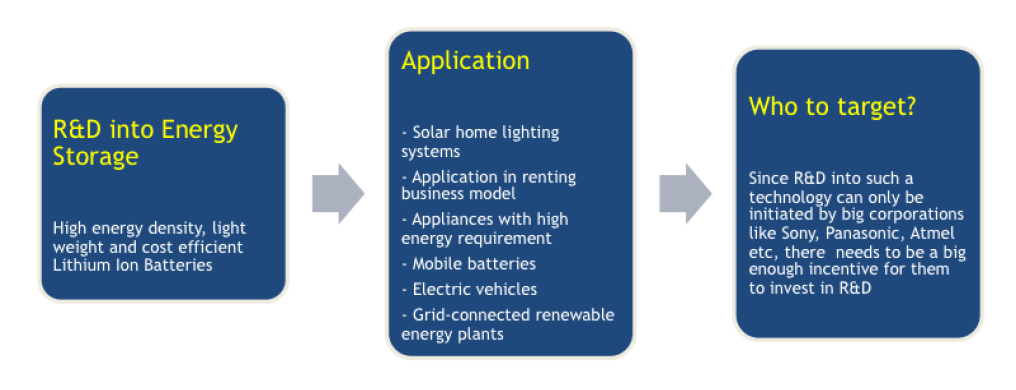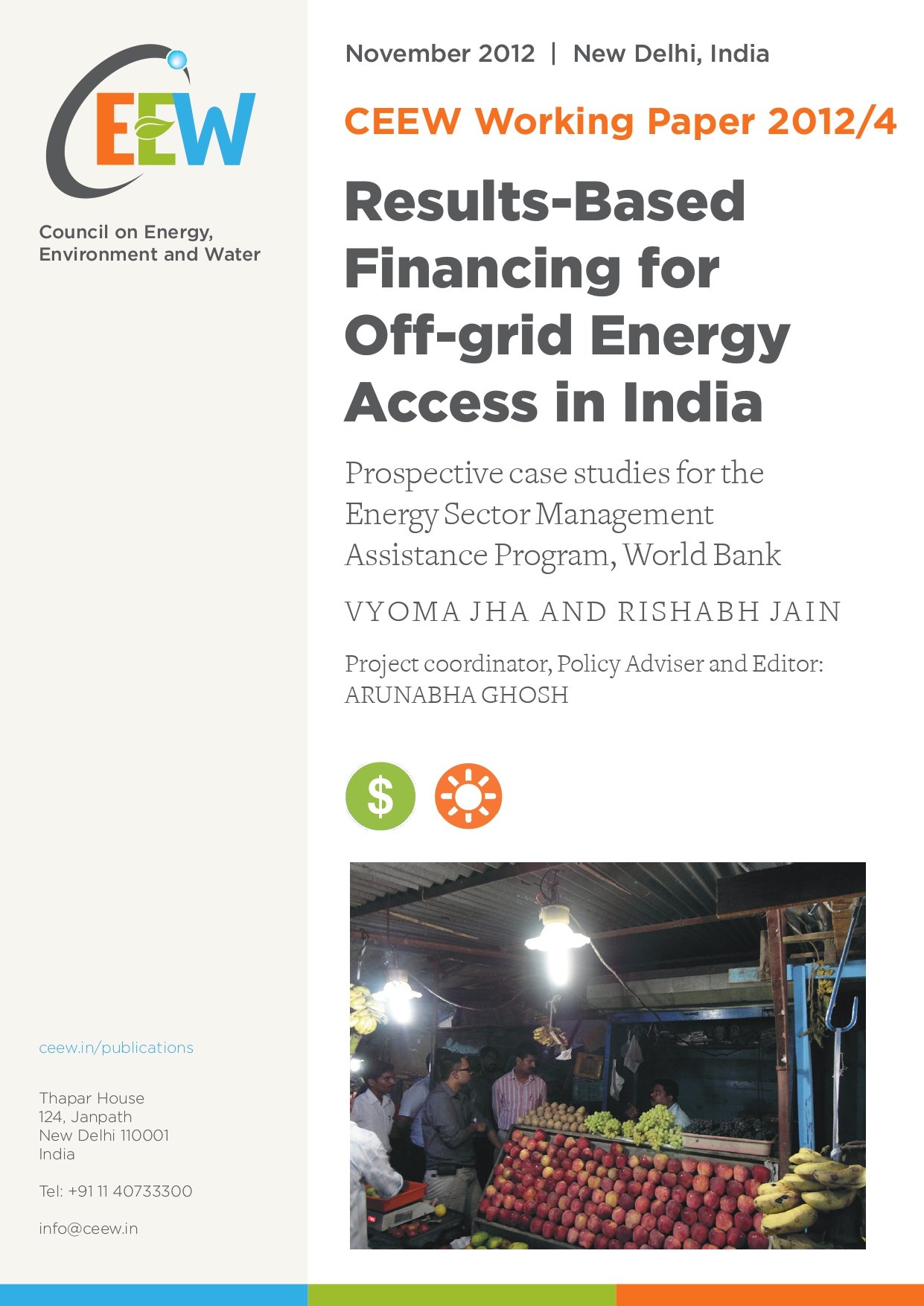Paper
Results-Based Financing for Off-grid Energy Access in India
Prospective Case Studies for the Energy Sector Management Assistance Program, World Bank
Vyoma Jha and Rishabh Jain
November 2012 | Energy Transitions, Sustainable Finance
Suggested Citation:Jha, Vyoma and Rishabh Jain. 2012. Results-Based Financing for Off-grid Energy Access in India: Prospective Cases Studies for the Energy Sector Management Assistance Program , World Bank. New Delhi: Council on Energy, Environment and Water.
Overview
This report, in collaboration with the World Bank, discusses two case studies - Solar Water Heating in South Asia and Stimulating R&D in Energy Access Technologies. The first case study seeks to increase the deployment of an solar hot water (SHW) system in urban residential buildings. It analyses the problems that were present in the market for SHW systems in India, and proposes appropriate result-based financing (RBF) design to achieve the desired policy objective. The second case study analyses the scope of facilitating R&D for the wider application of renewable energy technologies, which may go beyond home lighting and into more productive uses. It considers innovations across the energy access value chain, including innovations in the business models (the software and the value chain) and innovations in technologies.
Key Highlights
Case study 1: Solar Water Heating in South Asia
- Despite high voltage radiation, deployment of SHW systems is well below the potential and they remain limited to the areas where regulations demand it.
- An RBF mechanism could be used to incentivise vendors of SHW systems to potentially reach a wider customer base of the urban and residential sector and overcome some of the challenges faced during their deployment.
- Large parts of eastern and southern China have solar radiation of 2.5 kWh/m2 per day compared to India’s 4 kWh/m2 of radiation per day.
- Cost of deploying an SWH system is high and customers are eligible to take two kinds of subsidies. In addition to the subsidy provided by the ministry of New and Renewable Energy (MNRE), various states have introduced additional state-level subsidies to provide greater price support for SHW systems.
- The RBF mechanism can be used to stimulate competition in the market for SHW systems and incentivise the process of selling these products to new customers.
- The RBF mechanism could provide vendors with the additional finance needed as an incentive to tap new customers and sell more SWH systems.
- The RBF mechanism should ensure that it assists the market players in overcoming some of the challenges they face in accessing upfront finance.
- The size of the payments is calculated so to make SHW systems competitive with traditional heating geysers, assuming that vendors pass on the subsidy via lower end-prices.
Case study 2: Stimulating R&D in energy access technologies
- There was a case for R&D in energy storage by making batteries more efficient, light and durable. However, this case failed to meet the necessary preconditions for an RBF to be viable.
- A similar case was made for R&D into energy-efficient productive (income-generating) appliances, but it too failed to meet the necessary criteria for the application of an RBF mechanism.
- There was a case for innovation in business models, whereby an RBF was proposed to encourage new and innovative business models that offer variable usage payment options to customers.
- The price of solar lighting systems has decreased which has made it comparable to the conventional electricity generation systems. Upfront finance is a major challenge among rural households.
- A business model that customises the payment structure based on customer needs could potentially increase the demand for these systems. The risk of non-payment still lies with the entrepreneur.
- The proposed RBF scheme is designed in the form of an interest-free loan which could help the entrepreneur reduce the risks.
- The RBF mechanism would offer high-quality service to a larger number of customers than would otherwise have been possible.
Breaking down the total cost of SHS under the proposed RBF mechanism

Key Recommendations
- Create awareness among small clients and individual households regarding the availability of SHW systems and the subsidies attached to them.
- Educate households about the available choices in water heating in order to drive an attitudinal shift in favour of SHW systems.
- Give incentives to SHW system suppliers to inform consumers about these systems, their efficiencies and standards, financial implications and payback periods, and the choices available to the customer depending on their living conditions and needs.
- Non-banking financial institutions such as RBU can play an important role when setting policy directions; Non-financial supporting institutions such as the Solar Energy Corporation of India could help to channel funds, provide necessary skills and help in component certification.
- Incentivise large companies to undertake R&D operations. Also, there is a need to incentivise better service provision by vendors, such that customers are satisfied with the product and do not default on their loan repayments.
- Use the RBF mechanism to promote innovation in financing options that create new business models for existing off-grid products.
Result-based financing could offer performance bonuses for reaching poor customers, low-income neighbourhoods, or retrofitting older buildings, with a pay-out structure based on exponentially rising bonuses for reaching higher shares of the target market.










